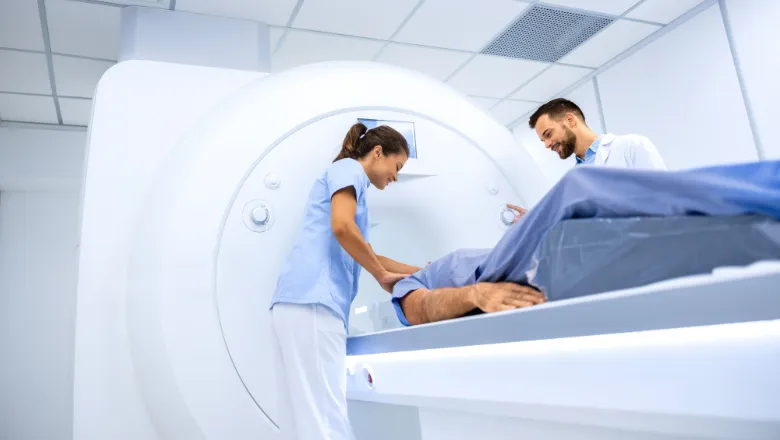Reviewed by Lexie CornerJun 11 2024
Researchers from King's College London, in collaboration with scientists from Japan, have developed a cost-effective and powerful iron-based superconducting magnet using machine learning (ML). This breakthrough could significantly impact the affordability of MRI machines and the future of electrified transport. The research was published in the journal NPG Asia Materials.

Image Credit: King's College London
Superconducting magnets can create strong, stable magnetic fields without large amounts of power. They can be utilized in various technologies, such as MRI machines, which require a strong magnetic field to generate precise three-dimensional images of soft tissue. They can also be used in the upcoming generation of transportation, such as Japan's SCMaglev train system.
However, the superconductors currently employed are primarily large coils of superconducting niobium-tin alloy wire. Devices that use them must accommodate this size, thereby restricting their application.
Researchers from Kyushu University, the Japan Science and Technology Agency, the National Institute for Materials Science, and the Tokyo University of Agriculture and Technology have worked with Dr. Mark Ainslie of the King's Department of Engineering on this project.
Superconducting magnets are the backbone of the future. Not only are they used to image cancers with MRI machines, but they will be vital for electric aircraft and nuclear fusion. However, the materials and technology required to create traditional copper-based wire superconductors are typically expensive, which has resulted in limited market penetration.
Dr. Mark Ainslie, Department of Engineering, Kings College London
Dr. Mark Ainslie said, “Using them in bulk form, as a magnet that does not lose its magnetism once magnetized, can result in a smaller footprint in comparison to heavier coils of wire, but copper-based bulk superconductors can take weeks to fabricate.”
Using artificial intelligence (AI), we have produced a cost-effective and scalable alternative using iron, which is a lot easier to work with and opens the door for smaller and lighter-weight devices. The first iron-based superconductors were made over ten years ago, but the magnetic fields they produced were nowhere near strong or stable enough for widespread use.
Dr. Mark Ainslie, Department of Engineering, Kings College London
Dr. Mark Ainslie added, “While superconducting magnets still need to be cooled to very low temperatures to function effectively, our process lays the groundwork for manufacturers to make them at speed and powerful enough for industrial applications – meaning more MRI machines for cheaper. By reducing the need for large amounts of superconducting wire in MRI machines, we can also create a new generation of smaller units that could be deployed at a GP’s office, rather than requiring large rooms in hospitals, widening accessibility.”
To guarantee patient safety and high-quality images, MRI machines have stringent specifications regarding the strength and stability of the magnetic field that their magnets generate. The researchers’ prototype is the first iron-based bulk superconductor that adheres to these specifications.
With the help of a new machine learning system, BOXVIA, the researchers created a framework that would enable them to develop superconductors in the lab more quickly than ever.
Trained on researchers' endeavors to enhance the superconductive properties of magnets by adjusting parameters such as heat and time during the fabrication process, BOXVIA identifies patterns that improve performance and refines parameter adjustments to devise the most optimal design.
It would typically take months for scientists to make each magnet and evaluate its characteristics to determine whether it is ideal for various situations, but this new software drastically shortens the time.
Additionally, the researchers discovered that the microscopic structure of the superconducting magnets created using this ML system differed from those made without BOXVIA, exhibiting greater iron-based crystals inside the magnet structure.
AI-produced samples had a different structure than human-created, high-performing samples. These samples had various sizes of iron-based crystals, unlike the uniform structure that human researchers have traditionally favored.
The group's next task is determining how this unique nanostructure contributes to improved superconducting qualities, eventually resulting in even more potent magnets.
Journal Reference:
Yamamoto, A., et al. (2024) Superstrength permanent magnets with iron-based superconductors by data- and researcher-driven process design. NPG Asia Materials. doi.org/10.1038/s41427-024-00549-5